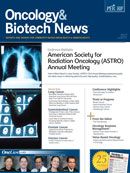Publication
Article
Oncology & Biotech News
The FDA Revokes
Author(s):
The FDA has broad authority to regulate food safety, as well as the safety, efficacy, and utilization of drugs and medical devices.

Andrew L. Pecora, MD
Editor-in-Chief Chief Innovations Officer, Professor, and Vice President of Cancer Services John Theurer Cancer Center at Hackensack University Medical Center
The US Food and Drug Administration (FDA), an agency of the US Department of Health and Human Services, has broad authority to regulate food safety, as well as the safety, efficacy, and utilization of drugs and medical devices. A concern for public safety is at the core of the FDA’s mission. The cornerstone of the agency and its longstanding mission was laid in the passing of the Pure Food and Drug Act, also deemed the “Wiley Act,” which was signed into law by President Theodore Roosevelt in 1906. A chemist, Harvey Washington Wiley, MD, ran the predecessor agency, the Bureau of Chemistry from 1883 to 1902, and was responsible for the original effort to regulate drug products through the enactment of the Biologics Control Act in 1902, after a horse serum that was used to treat tetanus caused the deaths of 13 children.
From its beginning, actions by the agency have sparked considerable political battle and debate over the reach and authority initially held by the Bureau of Chemistry, and later by the newly organized FDA.
Between 1938 and 1962, the FDA reviewed 13,000 new drug applications. However, it was not until 1962 and the passing of the Kefauver-Harris Amendments (a consequence of the teratogenic effects of thalidomide) that the FDA received the power to decide the fate of drugs using a new standard that required all new drugs to demonstrate “substantial evidence” of efficacy for approval. The Kefauver-Harris Amendments have been at the root of controversy that has led to public challenges of the reach and authority of the FDA.
The methods by which the FDA approves new drugs have led to several positive changes, including expedited reviews of drugs for life-threatening illnesses (eg, AIDS, cancer) and the new critical path initiative. However, the cardiac fatalities associated with Vioxx use led to increased scrutiny of FDA approval procedures, prompting many to call for more restrictions of the FDA’s authority. In turn, these restrictions have slowed the efforts by some to provide patients with access to unapproved drugs that pass through phase I safety testing.
This month, FDA Commissioner Margaret A. Hamburg, MD, revoked approval of the antiangiogenic agent bevacizumab (Avastin) for use in patients with metastatic breast cancer. The basis of this decision is embodied in the Kefauver-Harris Amendments because, according to FDA, Avastin did not show “substantial evidence” of efficacy and had substantive associated toxicity. Many critics believe that the decision was made partly due to the cost of drug. However, the FDA has no current authority to approve or revoke a drug based on its cost. Others believe that because the drug works for some but not all patients, it should remain approved until a biomarker can be developed to predict efficacy or futility.
Because patient safety is one of the FDA’s primary responsibilities, the agency decided to remove approval until “substantial evidence” of efficacy is evident in a prospective, well-defined group. Many women feel betrayed by this decision, and yet others like Frances M. Visco, president of the National Breast Cancer Coalition, appear to support it. The topic is now being discussed among presidential candidates and many state authorities who are once again questioning the role of the FDA.
In the end, when any agency has the authority to decide what constitutes the appropriate use of a drug or device that others want to use, there will be friction. Add to this our current economic crisis, the soaring cost of healthcare, and our apparent aversion to any level of risk, and you have a volatile list of competing priorities.
The one thing I am sure about is that Dr Harvey Washington Wiley would be quite pleased that his endeavor to create and impose regulations to keep the public safe marches swiftly on.





























%20(2)%201-Recovered-Recovered-Recovered-Recovered-Recovered-Recovered-Recovered-Recovered-Recovered-Recovered-Recovered-Recovered-Recovered-Recovered-Recovered-Recovered-Recovered.jpg?fit=crop&auto=format)
%20(2)%201-Recovered-Recovered-Recovered-Recovered-Recovered-Recovered-Recovered-Recovered-Recovered-Recovered-Recovered-Recovered-Recovered-Recovered-Recovered-Recovered-Recovered.jpg?fit=crop&auto=format)
